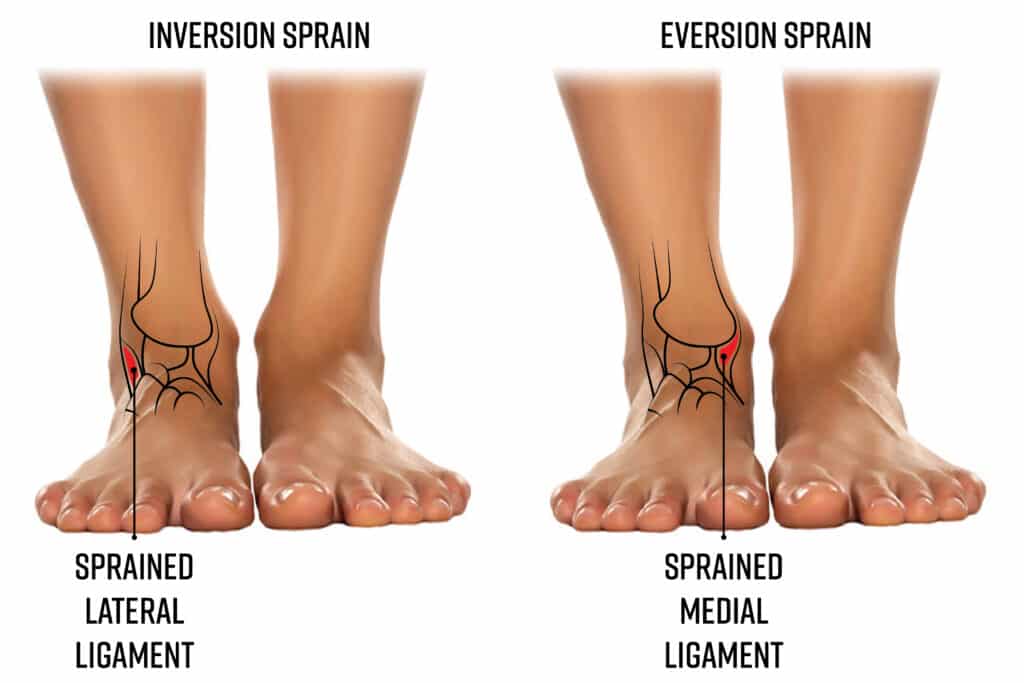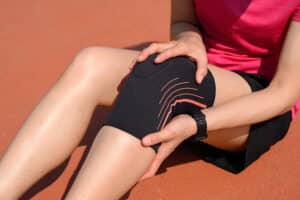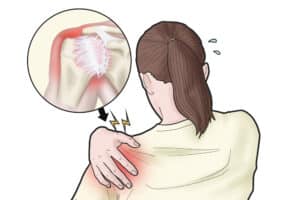Just one wrong step can unexpectedly lead to an ankle sprain.
Ankle sprains are among the most common injuries encountered, especially in athletes and physically active individuals, according to this resource. Understanding the differences in treatment between medial and lateral ankle sprains is crucial for effective recovery and prevention of future injuries. This guide will provide an overview of medial and lateral ankle sprains and delve into the physiotherapy approaches for both.
Understanding Ankle Sprains: Medial vs. Lateral
What are Ankle Sprains?
Ankle sprains are injuries that occur when the ligaments that support the ankle are stretched beyond their normal range of motion, resulting in tearing or straining. These ligaments are bands of tissue that connect bones to each other and play a crucial role in stabilizing the ankle joint and helping to control its movements. Ankle sprains cause pain and swelling. Physiotherapy treatment is important to help prevent ongoing ankle problems.
Symptoms of Ankle Sprains
Common symptoms of an ankle sprain include:
- Pain, especially when bearing weight
- Swelling and bruising
- Restricted range of motion
- Instability in the ankle
- A popping sensation or sound at the time of injury

Types of ankle sprains
Eversion ankle sprains — occurs when the ankle rolls outward and tears the deltoid ligaments.
Inversion ankle sprains — occurs when you twist your foot upward and the ankle rolls inward.
Medial ankle sprains involve the deltoid ligament, a strong ligament on the inside of the ankle. These are less common due to the inherent strength of the deltoid ligament and typically occur due to a forceful outward twist of the foot.
Lateral ankle sprains affect the ligaments on the outer side of the ankle. These are more common and usually happen when the foot rolls inward, causing the outer ankle to twist toward the ground.
Severity of Ankle Sprains
The severity of an ankle sprain can vary:
Grade 1 (Mild): Slight stretching and microscopic tearing of the ligament fibers. Symptoms may include mild pain, swelling, and stiffness.
Grade 2 (Moderate): Partial tearing of the ligament. Symptoms often include moderate pain, swelling, and bruising. There might be some loss of function and mild instability in the joint.
Grade 3 (Severe): Complete tear or rupture of the ligament. This leads to significant swelling, bruising, pain, and instability, making it difficult or impossible to bear weight on the injured foot.
Physiotherapy Approaches to Ankle Sprains
Immediate Care: RICE Protocol
Both medial and lateral ankle sprains benefit from the RICE protocol – Rest, Ice, Compression, and Elevation – in the initial stages post-injury. This approach helps to reduce swelling and pain.
Physiotherapy Rehab Phases
Acute Phase: Involves managing pain and swelling. Gentle range-of-motion exercises and light isometric strengthening exercises are introduced.
Recovery Phase: Focuses on regaining full range of motion, strength, and beginning proprioceptive training. This phase may include exercises like ankle circles, towel stretches, and resistance band work for strengthening.
Functional Phase: Involves more dynamic exercises to restore the ankle’s functional capabilities. This includes balance exercises, agility training, and sport-specific drills.
Specific Strategies for Medial vs. Lateral Sprains
Medial Ankle Sprain
Targeted Strengthening: Since medial sprains are less common, specific strengthening of the medial muscles may be necessary.
Proprioceptive Training: This is crucial for restoring the inner ankle’s stability and preventing future sprains.
Lateral Ankle Sprain
Balance and Stability Exercises: Due to the frequency of lateral sprains, exercises focusing on balance and stability are vital. This includes wobble board exercises and single-leg stands.
Eversion Strengthening: Strengthening the muscles that evert the foot helps support the weakened lateral ligaments.
Long-Term Management
Both types of sprains require long-term strategies to prevent recurrence:
Regular Strengthening and Stretching: Maintaining ankle strength and flexibility is key. Click here for some ankle sprain rehab exercises.
Supportive Footwear: Wearing shoes that provide adequate ankle support, especially during high-risk activities.
Activity Modification: Temporarily modifying activities to prevent re-injury during the recovery phase.
Medial and Lateral Ankle Sprain Recovery
Recovery from medial and lateral ankle sprains demands a dedicated and tailored physiotherapy approach. Understanding the differences in treatment and rehabilitation for these sprains is essential for effective healing and prevention of future injuries. Always consult with a healthcare professional or physiotherapist for personalized advice and treatment plans.
Remember, every injury, and every individual, is unique. The recovery journey should be tailored to fit individual needs and progress. Stay patient, follow your physiotherapist’s guidance, and you’ll be back to your active lifestyle in no time!
Get started today!
Seeing a professional physiotherapy provider like Nova Physiotherapy can offer expert care, personalized treatment, education, and a holistic approach to ankle sprains. If you’re considering physiotherapy, contact the friendly and experienced team at Nova Physiotherapy. We’re ready to help you on the road to better health.








